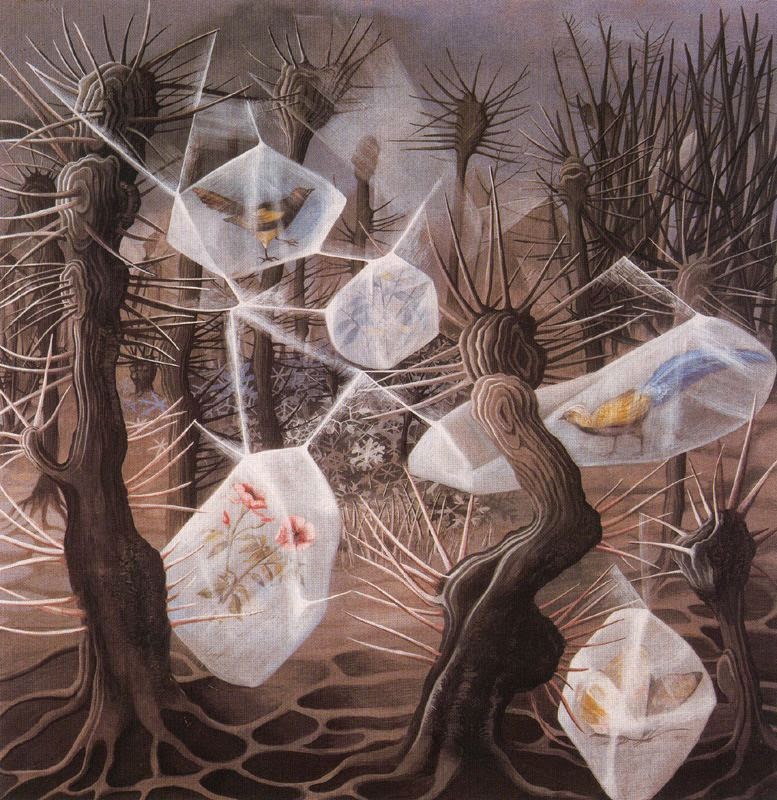Κυριακή 15 Μαρτίου 2015
Remedios Varo
Remedios Varo Uranga (1908 – 1963) was a female Spanish-Mexican para-surrealist painter and anarchist. Renaissance art inspired harmony, tonal nuances, unity, and narrative structure in Varo’s paintings. The allegorical nature of much of Varo's work especially recalls the paintings of Hieronymus Bosch, and some critics described her art as "postmodern allegory". Varo was also influenced by styles as diverse as those of Francisco Goya, El Greco, Picasso, and Braque. While André Breton was a formative influence in her understanding of Surrealism, some of her paintings bear an uncanny resemblance to the Surrealist creations of the modern Greek-born Italian painter Giorgio de Chirico. In Mexico, she was influenced by pre-Columbian art.
She also turned to a wide range of mystic and hermetic traditions, both Western and non-Western for influence. She was influenced by her belief in magic and animistic faiths. She was very connected to nature and believed that there was strong relation between the plant, human, animal, and mechanical world. Her belief in mystical forces greatly influenced her paintings. Varo was aware of the importance of biology, chemistry, physics and botany, but thought it should blend together with other aspects of life. She turned with equal interest to the ideas of Carl Jung as to the theories of George Gurdjieff, P. D. Ouspensky, Helena Blavatsky, Meister Eckhart and the Sufis, and was as fascinated with the legend of the Holy Grail as with sacred geometry, alchemy and the I Ching.
The sense of isolation was achieved again and again as Varo secluded her characters in one environment or another, conveying an extraordinarily powerful message to those who paid attention long enough to notice it. Her use of seemingly autobiographical characters—confined and held captive by forces unknown—could be seen as exposing the dynamic of superiority that is inherent in male surrealist’s misuse of women as muses. It could be interpreted that her paintings are responses to the marginalization of women; portrayals of the characteristic misogynist treatment of women artists by the male surrealists by likening her characters and chimerical figures to prisoners.
Εγγραφή σε:
Σχόλια ανάρτησης (Atom)























.jpg)




Δεν υπάρχουν σχόλια:
Δημοσίευση σχολίου